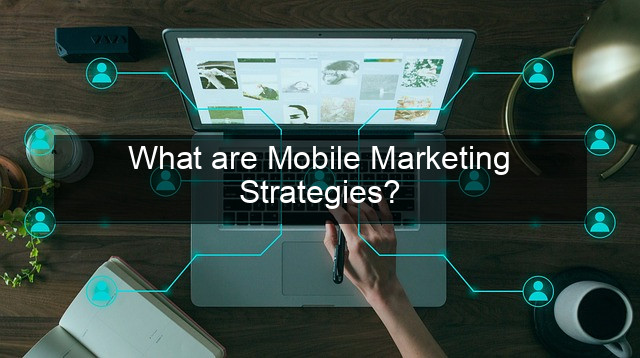What are Mobile Marketing Strategies?

- What are Mobile Marketing Strategies?
- What are Mobile Marketing Strategies?
- Understanding Your Mobile Audience
- Knowing Your Demographics
- Mobile User Behavior
- Key Mobile Marketing Channels
- Mobile App Marketing
- SMS Marketing
- Location-Based Marketing
- Measuring Mobile Marketing Success
- Key Performance Indicators (KPIs)
- Conclusion
- Frequently Asked Questions (FAQs)

What are Mobile Marketing Strategies?
The world has gone mobile. People are constantly connected, glued to their smartphones and tablets. This shift in behavior has revolutionized how businesses connect with their audience. No longer is a static website enough. Mobile marketing strategies are essential for reaching today’s consumers, wherever they are. These strategies encompass a range of tactics, from optimized mobile websites and in-app advertising to SMS campaigns and location-based marketing. Ignoring the mobile landscape means missing out on a massive opportunity to engage with your target demographic. This article delves into the core components of successful mobile marketing, providing a comprehensive guide to help you navigate this dynamic and ever-evolving field. From understanding your audience to choosing the right channels and measuring your results, we’ll explore the key elements you need to build a robust and effective mobile marketing strategy.
Understanding Your Mobile Audience
Knowing Your Demographics
The first step in any successful mobile marketing strategy is understanding your audience. Who are they? What are their mobile usage habits? What kind of devices do they use? Knowing your demographics – age, gender, location, income – is crucial. This information helps you tailor your messaging and target your campaigns more effectively. For instance, a younger audience might be more responsive to interactive content on social media, while an older demographic might prefer email marketing.
Analyzing user behavior is also essential. How do they interact with your existing mobile presence? Which pages do they visit most often? What actions do they take? This data provides valuable insights into their preferences and pain points, allowing you to optimize your mobile experience for better engagement.
Finally, understanding the types of devices your audience uses is critical for ensuring compatibility and a seamless user experience. Are they primarily on iPhones or Android devices? This knowledge will inform your design and development choices, ensuring your content displays correctly and functions flawlessly across different platforms.
Mobile User Behavior
Mobile users are often on the go, seeking quick and convenient information. They expect seamless experiences and instant gratification. Therefore, your mobile marketing strategies must cater to these needs. Optimize your website for mobile devices, ensuring fast loading times and easy navigation. Content should be concise and easy to digest on smaller screens.
Mobile users are also highly engaged with social media. Leveraging social media platforms for marketing is crucial for reaching your target audience. Create engaging content, run targeted ads, and interact with your followers to build a strong online community.
Furthermore, mobile users are increasingly receptive to personalized experiences. Use data to tailor your messaging and offers to individual preferences. Personalized recommendations and targeted promotions can significantly improve engagement and conversion rates.
Key Mobile Marketing Channels
Mobile App Marketing
If you have a mobile app, promoting it effectively is crucial. App store optimization (ASO) is essential for improving your app’s visibility in app stores. Use relevant keywords in your app title and description to improve search rankings. Encourage positive reviews and ratings to build credibility and attract new users.
In-app marketing is another effective way to engage users and drive conversions. Use push notifications to deliver timely updates and promotions. Offer personalized recommendations and exclusive in-app deals to enhance user experience and encourage repeat purchases.
Consider partnering with other apps or influencers to cross-promote your app and reach a wider audience. Collaborations can significantly boost your app’s visibility and downloads.
SMS Marketing
SMS marketing is a powerful tool for reaching customers directly. Use SMS messages to send promotional offers, appointment reminders, and important updates. Keep your messages concise and relevant to avoid overwhelming your audience.
Obtain explicit consent before sending SMS messages to comply with privacy regulations. Offer users the option to opt-out easily. Build a strong reputation by providing valuable and non-intrusive communication.
Segment your audience to tailor your SMS messages to specific demographics and interests. Personalized messages are more likely to resonate with recipients and drive conversions.
Location-Based Marketing
Location-based marketing allows you to target customers based on their geographic location. Use geofencing to send targeted messages to users within a specific radius of your business. Offer location-specific deals and promotions to attract nearby customers.
Partner with local businesses to cross-promote your services and reach a wider audience within your community. Collaborative marketing efforts can significantly enhance your brand visibility and customer base.
Use location data to personalize your messaging and offers. Tailor your promotions to the specific needs and interests of customers in different locations.
Measuring Mobile Marketing Success
Key Performance Indicators (KPIs)
Tracking the right key performance indicators (KPIs) is crucial for measuring the success of your mobile marketing strategies. Monitor metrics such as website traffic, app downloads, conversion rates, and customer engagement. Analyze this data to identify areas for improvement and optimize your campaigns.
Use analytics tools to track user behavior and gain insights into their preferences and pain points. Understand how users interact with your mobile presence and identify areas for optimization.
Regularly review your KPIs and adjust your strategies accordingly. Mobile marketing is a dynamic field, and continuous optimization is essential for staying ahead of the curve.
Conclusion
Mobile marketing strategies are no longer optional; they’re a necessity. By understanding your mobile audience, leveraging the right channels, and measuring your results, you can create a powerful mobile presence that drives engagement and boosts your bottom line. Embrace the mobile revolution and connect with your customers where they spend their time – on their mobile devices.

Frequently Asked Questions (FAQs)
What is the most important aspect of mobile marketing?
Understanding your audience and their mobile usage habits is paramount.
How can I improve my app store ranking?
Optimize your app store listing with relevant keywords and encourage positive reviews.
What is the benefit of location-based marketing?
It allows you to target customers based on their geographic location and offer personalized deals.
Which KPIs should I track for mobile marketing?
Track metrics such as website traffic, app downloads, conversion rates, and customer engagement.
| Channel | Strategy |
|---|---|
| In-App Advertising | Targeted ads within mobile apps |
| SMS Marketing | Promotional texts and alerts |
| Social Media Marketing | Engaging content and targeted ads |
- App Store Optimization
- In-App Marketing
- Location-Based Marketing




